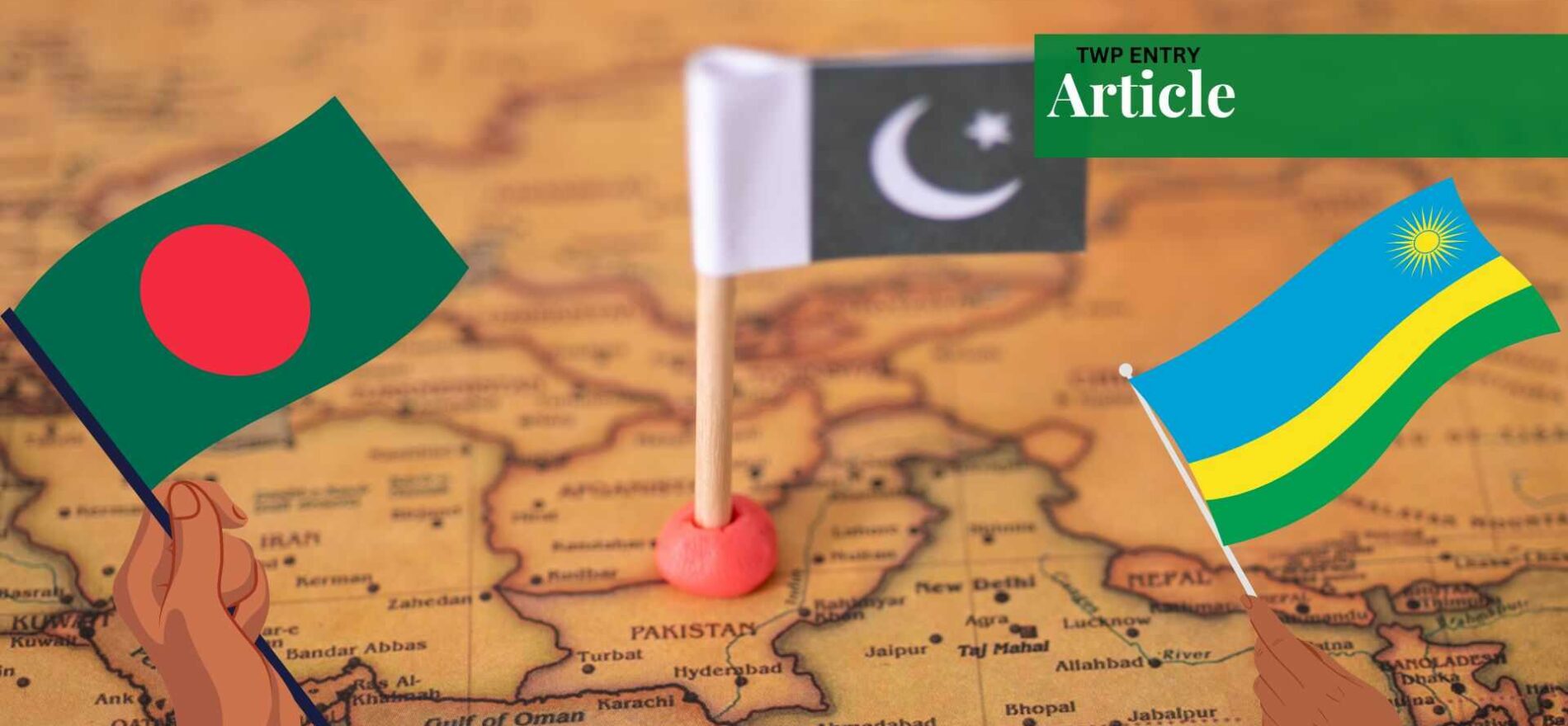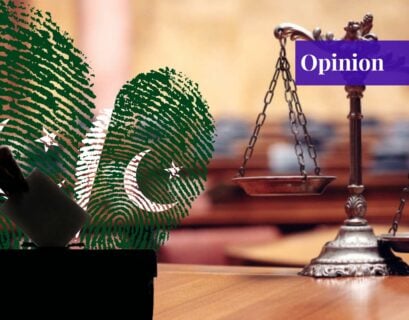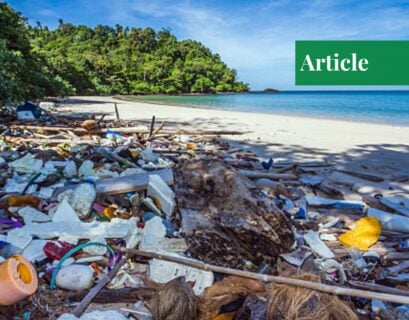While Mr. Jinnah might have said, “There is no power on earth that can undo Pakistan”, unfortunately, the burden of where we go next lies squarely on our shoulders. Pakistan will soon be entering the 77th year of its journey; starting from humble beginnings and overcoming its fair share of financial and economic hurdles, it is prudent to analyze exactly how far the state has come in terms of development when compared to other nations.
Considering the lackluster origins of the young country, crippled by financial insecurity, born from a radically skewed division of assets, an onslaught of refugees, and the pressing urgency to feed a population it was unable to sustain, Pakistan has come a long way in agriculture, consumption, income, and industrial production. However, these achievements are far from heartening when one considers that Pakistan’s economic freedom growth ranks below the current regional and world average.
This raises the question as to where exactly Pakistan stumbled when it was outstripped by countries with a far more disparate and turbulent colonial inheritance. Pakistan’s major Achilles heel has been the neglect of human development. It is estimated that Pakistan would have long since conquered the status of a middle-income country come 2024, had it wisely invested in economic and educational reforms to be on par with East Asian nations and controlled its population growth rate in the 1960s.
Instead, Pakistan has been unfortunate enough to be saddled with a short-sighted and ever-warring political class whose vested interests continue to overpower decision-making that is better for the long-term welfare of the country. As a result, Pakistan walks the tightrope between proverbial paroxysms, juggling between modernity versus Islamic tradition, authoritarianism versus democracy, and feudalism versus nationalism.
In essence, Pakistan is a nation grappling with an identity crisis while trying to navigate a murky path toward economic development with a fragmented vision as its guide. It is, therefore, crucial to define and compare the growth of other developing nations with that of Pakistan, to tackle its issues for a better and brighter future.
For the sake of historical linearity, it is necessary to address the elephant in the room or rather, the one present at the western border, India. From the get-go, India emerged with an advantage over Pakistan in terms of resources, systems of production, as well as growth opportunities. Pakistan, in contrast, had to import all its food requirements and start from scratch to build up an agricultural production and irrigation model that was capable of sustaining the demand of the state’s handsome population; a figure that has now crossed 247.6 million.
Back then, Pakistan’s smaller size and population coupled with freedom from adherence to the rigid caste system, played a key role in granting it social and economic growth in comparison to India. Indeed, there was a point when Pakistan’s development was greater than that of India in the 1960s. The Green Revolution and industrialization brought investment in HYV (high-yielding varieties) seeds and pesticides, along with improved irrigation, construction of the Tarbela Dam, and increased mechanization.
The Economic Reforms Order of 1972 also created a new industrial policy at the expense of nationalization. The nuclearization of Pakistan served as a game changer as well, by granting the state a strategic weight that went beyond the country’s economic indicators and development. However, this victory was short-lived. While Pakistan’s economy performed well up until 1990, there was a radical shift in Indian policies following 1991 that established India’s private sector as a trailblazer in the global economy and an Asian giant in its own right. India averaged a staggering growth rate for many years without any indicators of decline.
India’s success lies rooted in the fact that it was quick to realize that an inward-looking strategy was hindering its performance from the year 1947 till 1990. An outward-oriented economy was then swiftly set up by lowering tariffs, reducing the government’s role in economic decisions, and giving free rein to market mechanisms as a definitive factor in providing incentives via resource allocation to increase entrepreneurship. This strategy remained functional from 1991 onwards, till 2022.
Two critical junctures are largely responsible for India’s success in comparison to Pakistan. First, India has a chokehold on the scientific research and applied technological departments, creating a massive pool of highly qualified and trained personnel which has allowed the state to monopolize the services and IT sector. Second, Pakistan’s failure lies in the continued dependence on low-tech sectors such as the cotton textile industry, and the lack of diversification in commodity composition and target markets. This has been crippling the Pakistani economy.
The resultant skill shortages tip the scales in India’s favor leading to multinational corporations (MNCs) flocking to India to take advantage of more qualified labor and industrial set-ups. The private sector in Pakistan has also failed to adapt to the realities of the free market and is unhealthily dependent on governmental loans. In contrast, India takes a more global approach and maintains apt control over the narrative presented within the region. This is particularly lethal when one considers the appalling state of Pakistan’s contribution to discourse at large and its prevalent image problem.
The lack of resultant macroeconomic stability dissuades both domestic and international investors as well as financial institutions from investing in a developing Pakistan. Ironically, the pitfalls of both India and Pakistan stem from a failure to invest in human and economic development. Both suffer from poor infrastructure and energy shortages which adversely impact business growth as well as the quality of daily life.
An accurate real-time illustration of the issue is showcased in Pakistan’s current electricity model. The current investments in coal and hydro-power plants have resulted in Pakistan generating a surplus of electricity (predicted to be more than needed in 2023); however, despite this, millions of people are still deprived of electricity due to a faulty transmission grid.
A phenomenal waste of resources and efforts is seen time and again as Pakistan fails to adapt to climate change. The subsequent water crisis is contrasted by the seeming paradox of nationwide floods. The lack of public access to basic amenities is exacerbated by low bureaucratic accountability, corruption, and political interference which is then further widening class disparity and social mobility-drastically whittling down the existing middle class and giving rise to an elite that tears the social fabric.
Both India and Pakistan would do well to re-evaluate their criminal neglect of the quality of life they provide their citizens and should look toward their underrated cousin Bangladesh as a model in this regard.
Bangladesh: A Success Story
Bangladesh has fast cast away its status as, “an international beggar” and has established itself as a frontrunner amongst the top developing nations globally. Emerging poorer than Pakistan following the tragic, blood-torn divorce in 1971, Bangladesh is now richer and more progressive with a per capita income that gives even India a run for its money.

Bangladesh’s success as compared to Pakistan, hinged upon the following major factors:
- Depoliticizing the military
- Fiscal restraint
- Investment in human development
- Empowering the female workforce
The Bangladeshi army stepping out of the political limelight in the 1990s allowed the state to concentrate its GDP, which was previously allocated towards defense, improving the literacy ratio, enacting poverty and population control, and women empowerment. These steps enabled Bangladesh to cash in on Pakistan’s territory in textile exports, a fact made more impressive as the country did not even grow cotton in the first place.
Many in Pakistan have argued to cut the military budget in half to achieve the same effect while simultaneously reducing the military’s role as a key power broker. However, this is a rather simplistic way of looking at things and will not absolve the problem at hand. Bangladesh, unlike Pakistan, does not face a double threat from its eastern and western borders. The state has also accepted its geographical disadvantage by dubbing India a neutral party. As a result, Bangladesh is often coerced by larger neighbors such as India on matters of illegal immigration, drugs, etcetera.
Judging from previous historical experience, Pakistan can not afford to do the same. In the current day and age, Pakistan cannot remove itself, unscathed, from defense and counter-terrorism measures. Competition, while healthy, can border on obsession, as is in the case of Pakistan; seeking to out-do and out-match India on every front will only serve to alienate Pakistan from potential allies and make it more vulnerable to self-destructive mechanisms that blind it to internal problems that need to be addressed first.
Bangladesh is also less populated than Pakistan, more homogenous, and less prone to ethnic fistfights on a political scale. As a result, it has a clear vision directed towards social development and governance of amenities. Nationwide birth control and population campaigning helped reduce the fertility rate and improve public access to resources. Careful family planning and literacy efforts are reflected in Bangladesh’s superior health sector, boasting a lower infant mortality rate, safe immunization, and greater life expectancy. No such campaign has been successfully conducted on such a scale in Pakistan, mainly due to the combined efforts of ‘so-called’ religious pundits and social dogmas.
The target goals of the Bangladeshi economic policy served to increase exports, reduce unemployment, improve healthcare, and extend micro-credit by reducing loan/aid dependence. Regional income disparity and cultural differences among Pakistanis (in contrast with Bangladesh) strain inter-provincial harmony and give rise to political tensions which have a de facto domino effect on progress and development. These factors highlight where the economic growth of Pakistan has fallen short as opposed to that of Bangladesh and harmed its development.
Female Empowerment in Bangladesh
Bangladeshi women also surpass their Pakistani counterparts in the labor force. The attendance of women in both primary schools, as well as the economic market, is greater than that in Pakistan. On the Gender Parity Index, Bangladesh scored 1.1 to Pakistan’s lowly 0.8 (2015). However, exploitation of this labor force is also rampant within Bangladesh, with problems of poor wages and subpar working rights rearing their ugly head.
This raises the question, why is a country that has produced phenomenal women, being upheld by their unpaid labor, running on their sacrifices, and unable to respect them? Statistics from the Population Research Institute indicate that in terms of female feticide, out of the 24 million sex-selective abortions conducted worldwide, an eye-opening 1.2 million of them were conducted in Pakistan alone. Whatever your views may be on the Aurat march, female empowerment, and feminism, it is important to address the need for a major cultural rehaul to create a safe space for Pakistani women and root out the deep-seated gender dissonance.
Bangladesh, like its former sister state, has unfortunately inherited the same political diaspora and is suffering from similar powers such as deteriorating economic and social equity. A solution for both nations would be to institutionalize an inclusive and secular democratic system to help heal from colonial scars left behind.
It is interesting to note that when considering social and economic indicators of development, Pakistan is more similar to an African developing state rather than a South Asian one. In terms of economic indicators, Pakistan is relatively better off and approximately on the same level as a lot of South American countries. These facts make it prudent to study an African nation to identify potential strategies Pakistan could adopt for a better future.
Rwanda’s Path to Progress
Key factors propelling Rwanda’s success include liberalization of the agricultural sector, embracing market reforms, focusing on human development, and using military-owned entities to retain state control in strategic long-term enterprises. Rwanda, like Pakistan, has been a victim of violent political settlements and is home to immense ethnic disputes.
Again, like Pakistan, Rwanda’s military remains a decisive power broker in the state economy. The point where the trajectory of Rwanda diverges from that of Pakistan is that the Rwandan Patriotic Front maintained an absolute majority with a relatively weak coalition opposition and directed its focus to a seven-year National Strategy for Transformation (NST1) to achieve the status of a middle-income country quickly.
Military investments are directed toward economic gains in brokering ‘open-ordered’ deals while maintaining political stability. This modus operandi of the military is not applicable in Pakistan, owing to defense limitations, but the NST1 can be used to significantly reframe our current economic structure to prioritize a shift from an agrarian-intensive economic standstill towards a more services-oriented economy.
Pakistan can also move towards adopting human development goals that have been achieved by Rwanda such as a high literacy rate, widespread population control, improved healthcare facilities, and greater opportunities for female empowerment. The recent parliamentary elections in Rwanda, which saw women fill 61% of the seats, showcase the achievement of some of these goals.
Both countries suffer from poor infrastructural development and political instability which threatens to curb sustainable development. A possible solution for both would be increasing dynamism in the private sector which, in turn, would increase domestic savings, bridge the skill gap, and explore self-financing public investments to reduce dependence on external concessions and grants.
Conclusion
Ultimately, Pakistan needs to take a long hard look at its existing combination of political agencies, national objectives, resource allocation policies, and authoritarian tendencies. The nation has survived crises through effective and immediate response, including partition, mass migration, and multiple wars over Kashmir, but it needs to consider what it means to go beyond the confines of mere survival to realize its true potential.
In short, an apt description of its national identity wouldn’t be ‘rogue’ or ‘third world’ (as per Twitterati) but rather, “stubborn.” This stubbornness is a double-edged sword and can easily be reflected as tenacity and resilience on one end and recalcitrance and stagnation on the other. It is high time for Pakistan’s citizens to roll up their sleeves and determine once and for all whether they will persevere or remain a relic of the past. To conclude with a parting warning in the wry words of Dr. Ilhan Niaz, a prominent Pakistani historian, “Pakistan is running out of countries to fall behind.”
If you want to submit your articles and/or research papers, please check the Submissions page.
The views and opinions expressed in this article/paper are the author’s own and do not necessarily reflect the editorial position of Paradigm Shift.


















